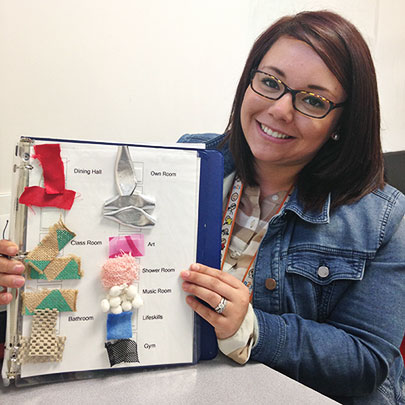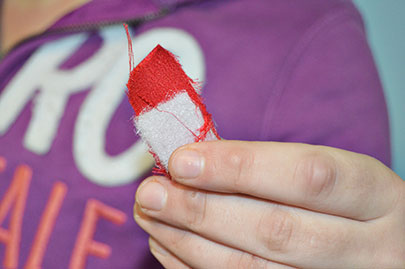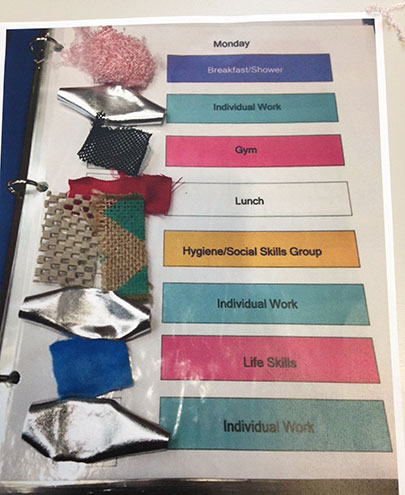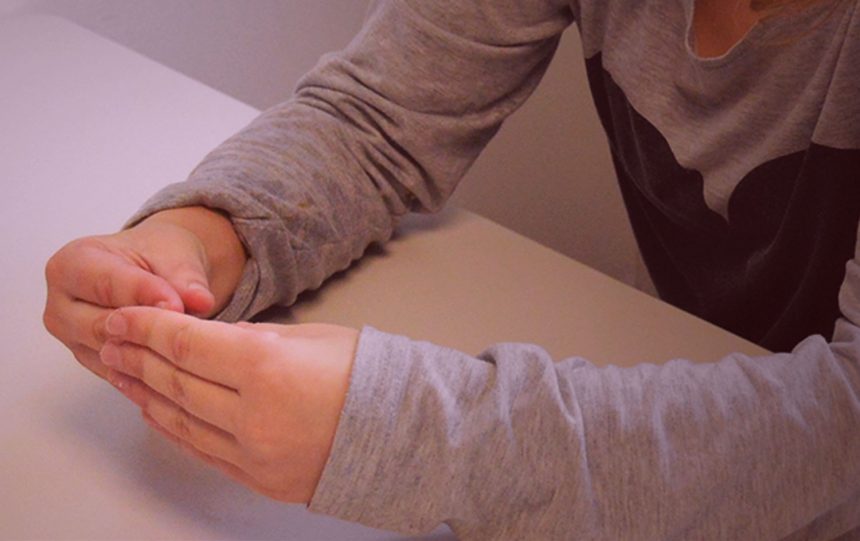While you wouldn’t notice it at first glance Tracy* is, in a lot of ways, a typical 18 year old girl. She’s boy-crazy, she has a sense of humor and while she may know what you’re asking, she’s not so interested in complying… She also has autism and is nonverbal … and as Rachal Hovey attests “She’s awesome.”
Tracy came to Ädelbrook’s Learning Center in 2012, her first day also happened to be Rachal Hovey’s first day as the Speech and Language Pathology Assistant (SLPA), As the SLPA, Rachal was trying to help find ways to communicate with Tracy. Besides being nonverbal, it was quickly established that the sounds she did make didn’t have any communicative meaning. Tracy’s team, which includes Rachal, Occupational Therapists, Brian Heslin, Board Certified Behavior Analyst (BCBA), Special Education teacher Jackie Peck and her 1:1 Paige Anderson, first used a Picture Exchange Communication System (PECS), but realized that she only seemed interested in using that for snacks. Her primary reason for communicating was based on want not need. Rachal recognized that for Tracy, necessary tasks such as bathroom visits didn’t carry the reward value of something like snacks, gym or preferred activities.

Tracy especially had difficulty transitioning from one activity to the next. She would often have temper tantrums, sitting on the ground and not getting up, to avoid going to the dining hall, or other less favored activities. Due to their very limited success with the PECS system, the team worked together to figure out how they could reach her.
While exploring options they discussed her favorable reaction to sensory items, they decided to rethink their way of communicating. “She loves fabric … the collar of a shirt, jeans, she just has certain fabrics she really likes,” said Rachal. They decided to essentially create a Fabric Exchange Communication System.  They purchased 13 pieces of fabric, some of which they knew she loved, and others that she was not so fond of, and then associated the fabric with an activity. “We put the preferred textures with the preferred activities and the not so preferred fabrics, with the not so preferred activities,” explained Rachal. All of this was laid out in a schedule book, the fabrics attached, by Velcro, next to the activities of the day. The different activities included: art, bathroom, classroom, gym, lunch, shower, and many others.
They purchased 13 pieces of fabric, some of which they knew she loved, and others that she was not so fond of, and then associated the fabric with an activity. “We put the preferred textures with the preferred activities and the not so preferred fabrics, with the not so preferred activities,” explained Rachal. All of this was laid out in a schedule book, the fabrics attached, by Velcro, next to the activities of the day. The different activities included: art, bathroom, classroom, gym, lunch, shower, and many others.
 “The fabric reflects the daily schedule… When she goes to the activity, she carries the fabric. It’s not so much about choice, the goal is for her to know that the fabric means she’s going to that specific activity, which reduces the negative behavior while making the transition,” explained Rachal. The fabric exchange yielded the highest level of accuracy with Tracy at 80%.
“The fabric reflects the daily schedule… When she goes to the activity, she carries the fabric. It’s not so much about choice, the goal is for her to know that the fabric means she’s going to that specific activity, which reduces the negative behavior while making the transition,” explained Rachal. The fabric exchange yielded the highest level of accuracy with Tracy at 80%.
“Our goal is to be able to give Tracy a piece of fabric and she will be able to transition to where she needs to go independently,” said Rachal. While Tracy will likely never live fully independently, the Ädelbrook team is trying to help her understand her surroundings and make her own way.
“It’s about being able to go outside the box to find ways to give someone, who can’t communicate, a way to know what’s going on. There are other options besides replacing someone’s voice,” said Rachal
*Name changed to protect identity


